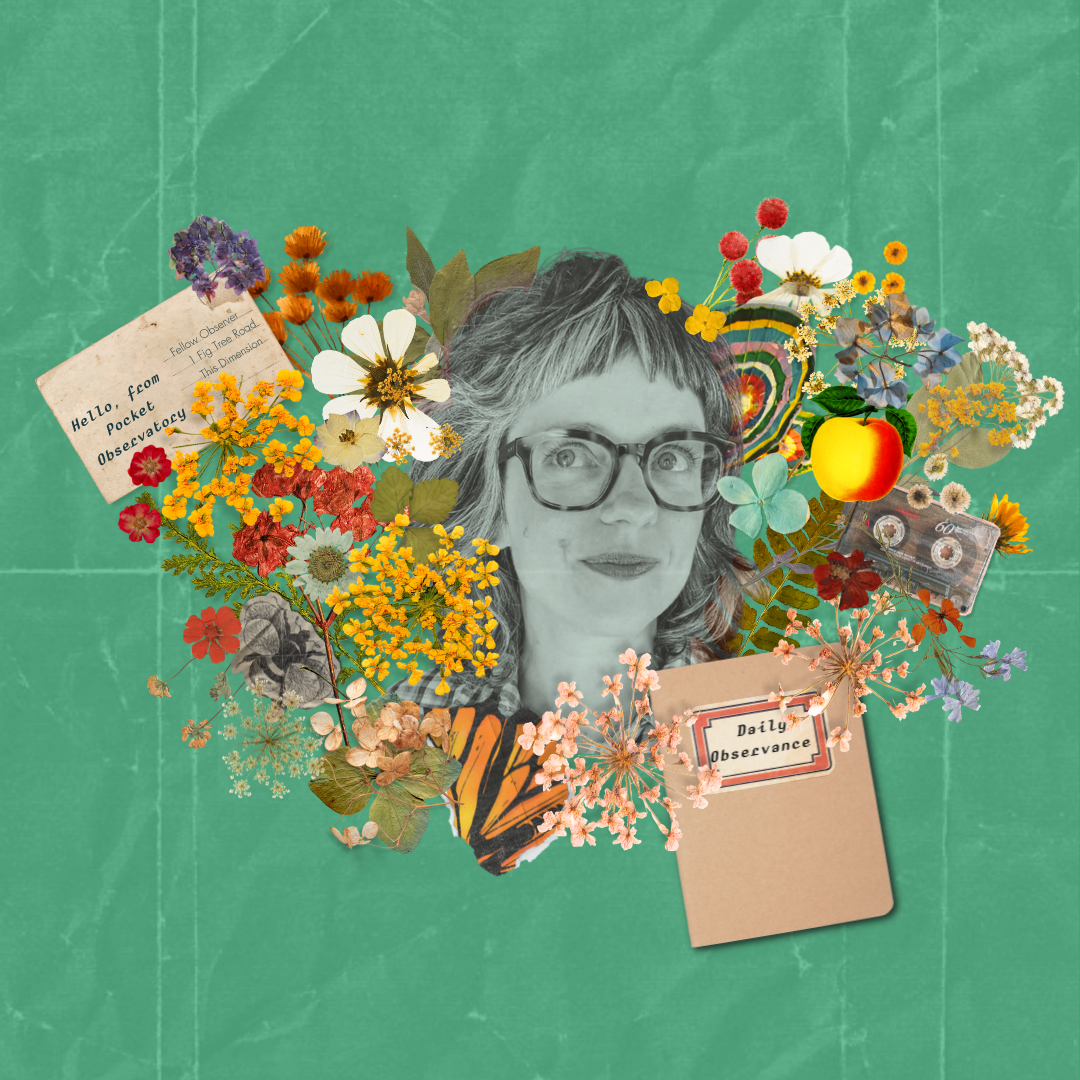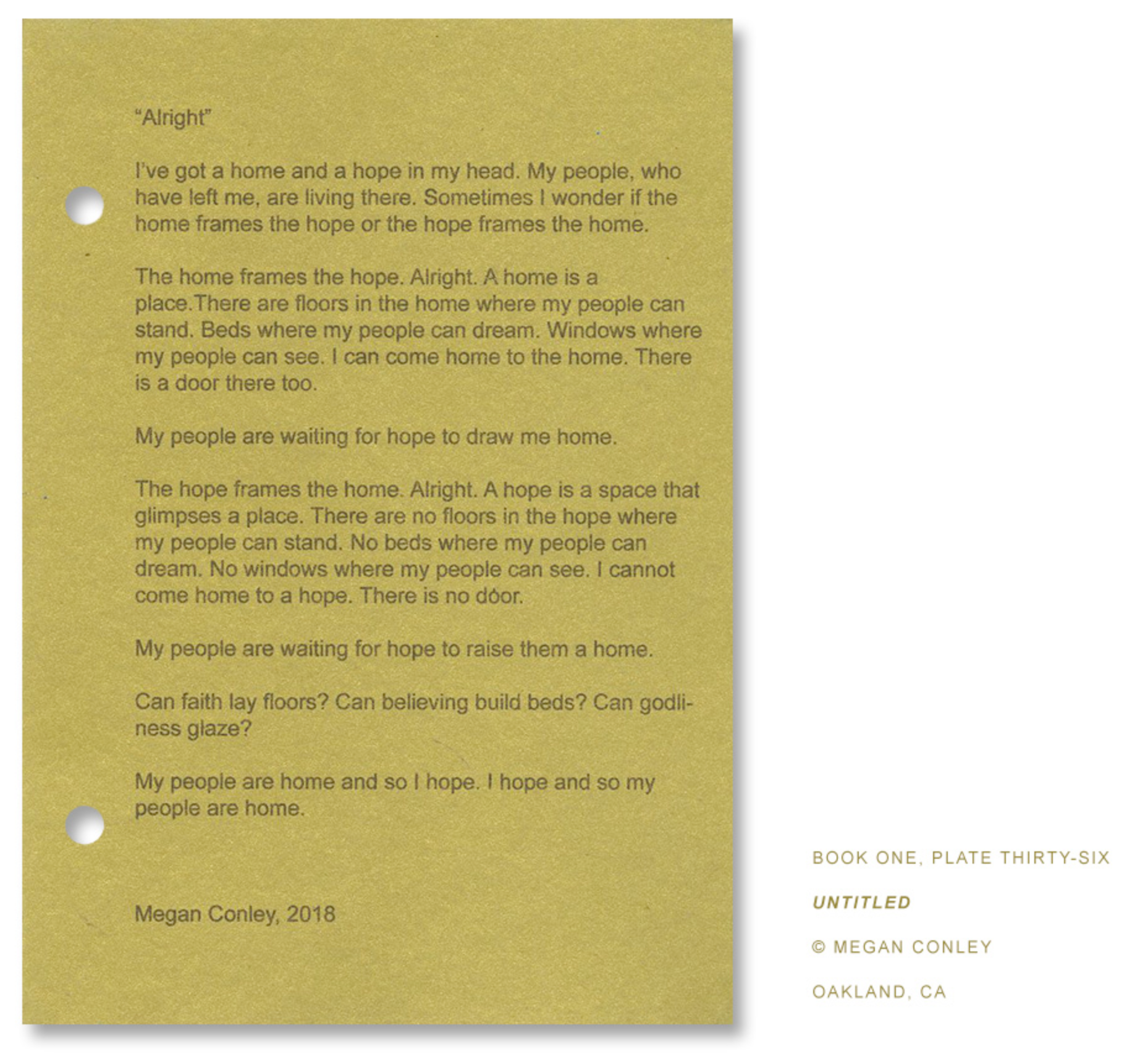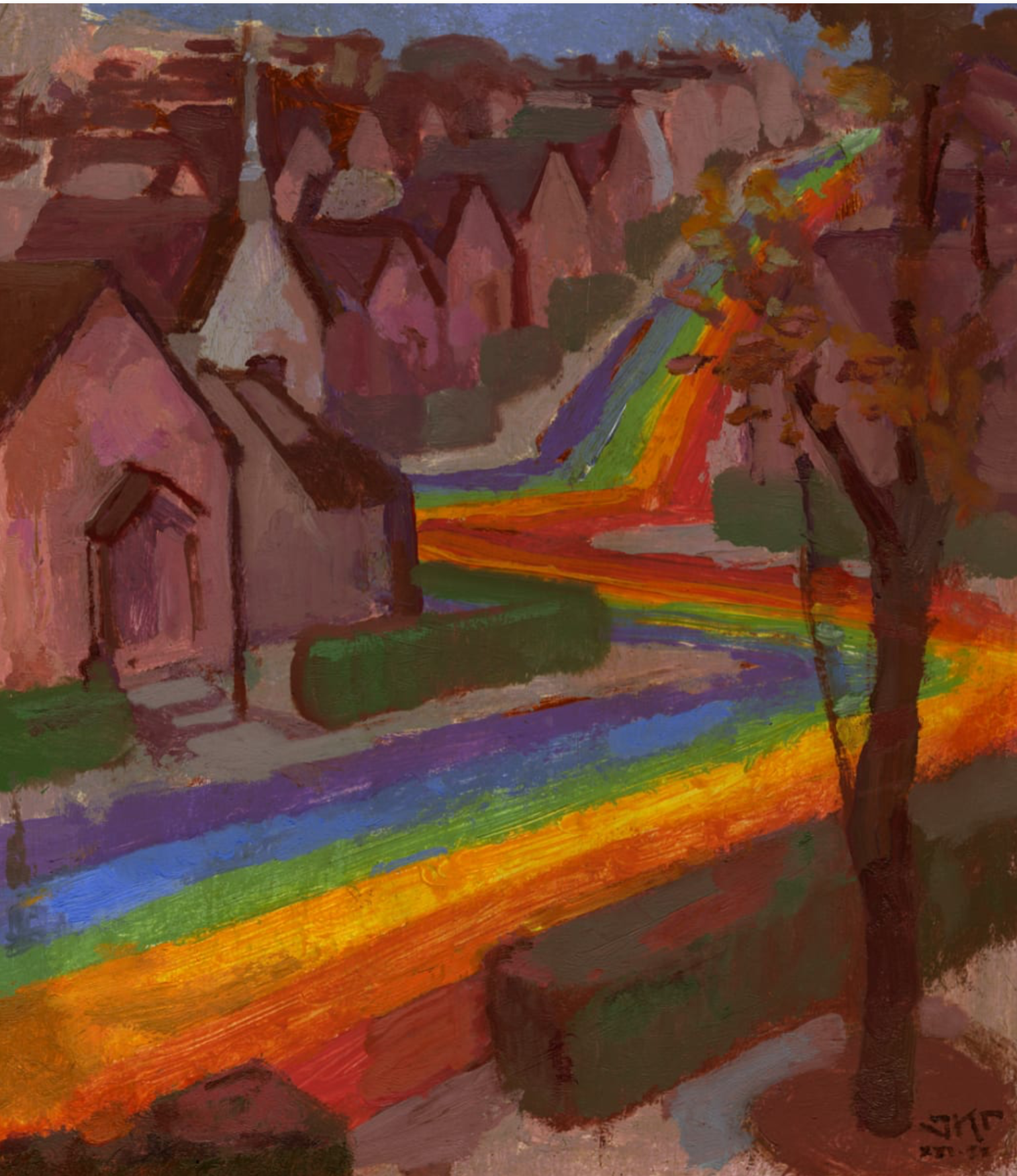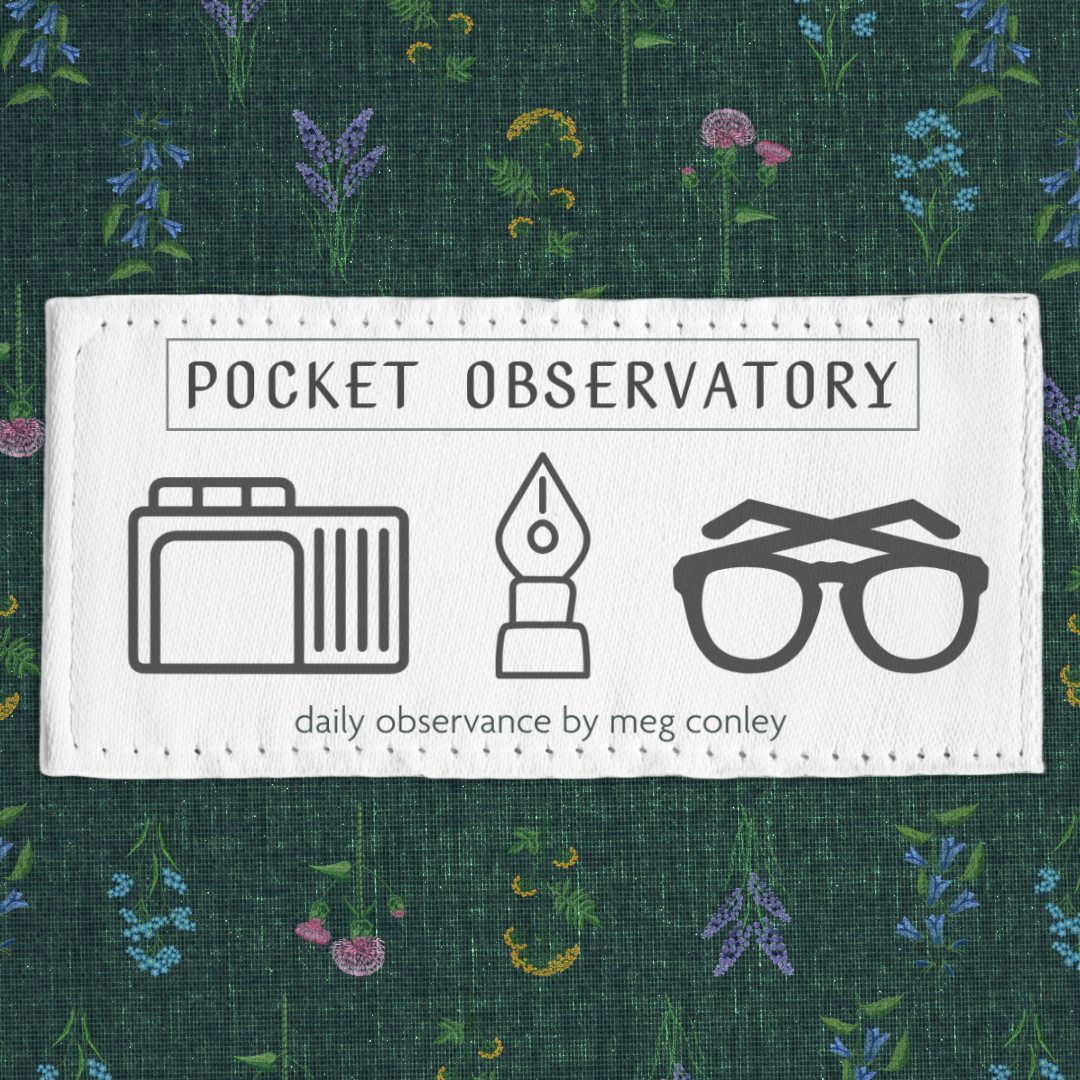
Pocket Observatory is an independent website, run by a single person - me.
I am not funded by data-hungry venture capitalists. I do not collect your data and sell it to the highest bidder. I do not host third-party ads that track your online habits. I only make money when my readers pay me. If you value my work, consider financially supporting it once or once a month.
Support Meg's WritingTitle: Observation #3
Date of Observation: June 9, 2024
Observation:
My six-year-old and I walked to the park on Sunday. We crossed the first landscape to lodge itself in her memory. Still, she always focuses like it’s brand new.
Inspecting a button half-buried in the dirt, blowing gently on a leaf decomposing into lace, waiting patiently at the crossing of a particularly fat roli-poli. She moves slowly. People will tell her to hurry up. I don’t want to be one of those people.
Once, I told her that time seems to pass more slowly when we pay attention. I was reminding myself as much as I was teaching her.
On this walk, she bent down to look at half a worm in the middle of the sidewalk. What happened? It was probably dropped by a bird who wonders where she left her last bite.
Hands on her knees, my daughter looked from me to the worm and back again,
“Mama, I am paying attention so we have more time together.”
I crouched down beside her, and we looked at the worm together. A superposition of myth and moment made me dizzy. I put both hands on the ground, quickly. I wanted to say,

Worms eat fruit in our garden. And worm castings make soil. And soil nourishes the fruit. A woman once ate fruit in The Garden. We will be eaten by worms. Worms are eaten by birds. I hope the worms that eat me are swallowed whole before a long flight.

Instead, I told her I thought the bird would return to finish her feast. We both knew it wasn’t true. But it made us happy to think of the bird descending, Ah, there’s the rest of my breakfast!
She took my hand. A few more steps and she stopped in front of a utility box. In the days since we’d last seen it, someone painted a bright red “Free Gaza” across it. My six-year-old can’t read yet.
“Mama, what does it say?”
“It says ‘Free Gaza.’ Gaza is a place where people have not been free for a very long time. There is a lot of violence there right now. And the people in Gaza are not even free to escape the violence. This person thinks the people in Gaza should be safe and free. And they should be safe and free in Gaza, not just outside of Gaza. So they painted ‘Free Gaza’ here.”
“Is Gaza close to here?”
“No, it’s pretty far away.”
“But this person thinks we should know about it here?”
“Yes, this person must think that.”
If she was a bit older, with a bit more knowledge, she might have asked why there was violence or who was keeping Palestinians from escaping the violence. Instead, she asked about something she does understand - rule-breaking.
“This box doesn’t belong to the painter, right? What is inside of it?”
“I am not sure what it is in this box, exactly. Usually, these utility boxes hold things that connect neighborhoods to electricity or telephone service. So you’re right, the person who painted that doesn’t own the box. But I don’t think they did anything wrong. When you paint a public structure without permission, it’s called graffiti. And graffiti can be a really important kind of art!”
She perked up. She’s been told not to paint many things - don’t paint the neighbor’s fence, don’t paint the milkweed, don’t paint the dog. But suddenly, I was about to explain a significant loophole.
“Sometimes ideas are so important, they need to be seen by lots of people. But the people who own public things like government buildings and utility boxes don’t want to give any space to that idea. So artists take the space.
It makes a lot of sense to paint ‘Free Gaza’ on a box that connects homes to one another. Because we’re all connected. So if the homes in Gaza aren’t free, the homes here can't be free. Not really.
Freedom is a state! Kind of like…okay, you know how water can be solid, liquid or gas? If it’s freezing outside, all the water freezes, right? Because it is freezing outside! It’s like that! Either every home is free or no home is really free.”
She considered this, “So this person wants us to know we’re all connected and it’s not FREEing outside yet?”
She emphasized the FREE to help me see she was playing with words, which is how she plays with me. I always appreciate the work she puts into our relationship.
“Yeah, I think that’s what the person wants us to know.”
As I stood there, homes in Palestine, in Israel, in Prussia, in Denver, in Kentucky, in Ireland, in Chicago, in New Mexico, in California combined in the past, the present, the future. They formed a pattern I could almost see from the corner of my eye. I wanted to say,

Gaza is very close. People in our city weep for Palestinian family members killed by American missiles. Those missiles, and others, were launched minutes ago and months ago and millenia ago.
Did you know America turned away Jewish asylum seekers in the 1930s and 1940s? Many of the people turned away at our borders were sent to concentration camps. The first report about living conditions in Auschwitz came out of the camp in 1941. Other reports about mass death were made over the next few years. American and British leaders were aware of first-hand accounts of the gas chambers by 1944, at the latest.
In 1944, America chose not to bomb the traintracks used to carry Jewish people to Auschwitz-Birkenau. Jewish leaders begged world leaders to bomb the tracks and the gas chambers. The allies flew over the tracks and camps on other missions. But freeing Jewish people - Jewish children - from death in the gas chambers was not an American priority. It didn't serve American interests.
The past isn’t a narrative, it’s a tangle of threads. But it seems to me that The Nabka could only exist in a world where asylum wasn’t granted to Jewish people, a world where Hitler’s trains were allowed to keep running. Violence begets violence. This doesn't excuse anyone. It just might explain many things.
On my mother’s side, my ancestors emigrated from Prussia. They left their homeland just as a Prussian nationalist began popularizing a eugenics-based brand of Jew-hatred - antisemitism. I don’t know about their lives before they got to Chicago.
Did you know my great-grandmother spoke Yiddish to my mother? My mother’s mother thought the Yiddish her parents spoke was German. She’d been taught neither language. Her parents had fully assimilated her. My great-grandmother must have regretted the decision. She tried to give my mom some words before she died.
A Jewish friend once learned this about me and said, “You’re Jewish?!” And I said, 'I don’t know.' Which is true.
I don’t know what I am, other than your mother. But you are more than my daughter, okay? I can't tell you what you are.
I drop your sister off at theater camp every weekday at our local Jewish Community Center. I always pass an armed guard. He waves to me. He’s there to make sure everyone inside gets to go home. He is there to make sure your sister is home free. Did you know Viola is named after my great-grandmother?
Did you know we are here because all of our ancestors were forced from their homes? On my dad’s side, they lost their land in the Irish Rebellion. And their legs and eyes in the Battle of Culloden. And then they came here, to be free. But they couldn’t be free in a nation built on genocide and chattel slavery. No one can. And so they were buried every day, in coal mines in the east and silver mines in the west.
This utility box is installed on land taken from its First People.
You think your home is just five blocks that way. But someday, you’ll realize you’ve never been home. And you don’t know where your home is. There is no one left to give you any of the words.
If you have daughters, go on walks with them. It will feel like you are walking home.
I will have to walk ahead of you someday. I don't want to. I want to stay so still and pay attention so well, time stretches until it breaks. But I can't stop moving, even when I try. Motion is change and change is time and time will move me away from you.
But when it seems I've gone very still, please remember I can't stop moving even when I try.
I'll be just ahead of you, looking for our home. If I can't find it, I'll make you a home. I'll be waiting there, for you and your sisters. When the three of you arrive, it will be my home too.

Instead, I said, “I hope when you grow up you help to make it FREEing outside.” She laughed, delighted that I was playing with her wordplay. She appreciates the work I put into our relationship.
We started moving again. She found two special pebbles before we got to the park. I put them in my pocket. They weighed me down, keeping me there, as I pushed her on the swing - higher, higher, higher.
Emerging Questions
In my state, graffiti is considered a form of vandalism. And vandalism is a crime.
Do you know where the word ‘vandalism’ comes from?
The Vandals were a Germanic tribe first mentioned in the writing of Pliny the Elder. By 400 AD the Vandals controlled enough land to feel like a threat to the declining Western Roman Empire.
Vandals were Arians - they believed God existed before Jesus and that Jesus was subordinate to God. Roman Catholics considered them heretics. Heretics could have no authority, and so no protection, in a Roman Catholic world. And the Roman Catholic world was supposed to encompass the known world.
The Vandals sacked Rome in 455 AD. For millenia afterward, doctinaire chroniclers claimed the Vandals committed unprecedented acts of destruction and defacement as they overcame the city. To destroy pointlessly, needlessly, without authority became known as ‘vandalism.’ Of course, the Romans sacked plenty of cities. But when people in authority destroy public spaces, it’s called retribution, or justice or shock and awe.
In the sixth decade of the first millennium, the Jewish people wanted to be free of Roman rule. They resisted the Emporer and his authority. The fire of revolution began to spread. Titus and the Roman army were sent to subdue every spark of revolt. They burnt Jerusalem to the ground. It’s hard for cold ash to catch fire, I guess.
Contemporary historians claimed that Titus and his army showed moderation when besieging Jerusalem. Yes, the Second Temple burned. The homes surrounding it turned burnt from their crossbeams outward. Jerusalem turned from a city to a desert overnight. But the Romans said the blame lay with the Jewish people who would not stop fighting.
The Romans looted the Second Temple before they watched it burn. The Arch of Titus, a triumphal arch constructed to celebrate the looting, still stands in Rome. People don’t think that arch is vandalism, they think it’s a landmark.
Today, historians think the Vandals looted as much as the Romans generally looted after conquering a city. And that they were somewhat less destructive than Romans tended to be. Rome was burned down, for example. But the word ‘vandalism’ is still with us.
I am not a Vandal apologist. Sure, they didn’t sack the city more than other ummmmm city sackers of the age. But they were very into enslaving people. And surely that’s worse than tearing down a Roman statue of Venus or whatever.
It is worth thinking about how we use the word vandalism.
This week, the home of the Jewish director of the Brooklyn museum, along with the homes of board members, were splattered with red paint, with hateful words and images. Attacking a Jewish person, a Jewish home, because of Israel’s actions in Gaza is just deeply, deeply antisemitic. Headlines say the homes were vandalized. I am not sure vandalism is a strong enough word for what happened to those homes. Isn't that desecration?
What about the stuff we call vandalism that defaces public spaces on behalf of the voiceless? Isn’t that something different and better and more vital than a word like vandalism can contain? Like...Free Gaza in bright red paint on a utility box - isn't that a love note, or poetry or guerrilla liturgy?
This piece has been updated to reflect recent reporting. It was originally reported that all four Brooklyn Museum officials are Jewish. The director of the Brooklyn Museum, one of the victims, is Jewish.
Listen Closely
I listened to The Trapeze Swinger on loop while I wrote this piece. If I've done my math correctly, I listened to the song about 116 times. (Did I do my math right? The song is nine minutes and 31 seconds long. This took about 22 hours to write and edit. I listened to The Trapeze Swinger almost that entire time, with a few hours dedicated to other aching songs. So I am thinking 18 hours total of Trapeze Swinger? 18 hours is 1080 minutes. 1080 minutes divided by 9.31 is about 116?)
In the song, there's graffiti on the pearly gates leading into heaven. A gated heaven no longer makes any sense to me. Heaven can't have borders. But if there were gates around heaven, I think that would call for some "eloquent graffiti."

This is an early 20th century image of the gates leading into my neighborhood. My neighborhood was built to be a kind of residential heaven. Its pearly gates were made of redlining. I put the graffiti from The Trapeze Swinger onto Park Hill's gates. Heaven only needs gates if it wants to keep people in hell.
My neighborhood’s fight for integration changed America. Now white neighbors are suing a Black pastor over his social justice work.
Adjacent work
Alright
In 2018, J Kirk Richards asked me to take part in Handed Down and Altered, "a meditation on canonized scripture as collaborative art." There are many things I wish I could unwrite from my time as a deeply believing Mormon. But this is not one of them. It almost reads like a message from my present self to my past self. I was here already, I just didn't know it.
I've got a home and a hope in my head. My people, who have left me, are living there. Sometimes I wonder if the home frames the hope or the hope frames the home.
The home frames the hope. Alright. A home is a place. There are floors in the home where my people can stand. Beds where my people can dream. Windows where my people can see. I can come home to the home. There is a door there too.
My people are waiting for hope to draw me home.
The hope frames the home. Alright. A hope is a space that glimpses a place. There are no floors in the hope where my people can stand. No beds where my people can dream. No windows where my people can see. I cannot come home to a hope.There is no door.
My people are waiting for hope to raise them a home.
Can faith lay floors? Can believing build beds? Can godliness glaze?
My people are home and so I hope. I hope and so my people are home.

J Kirk Richards' art has always spoken to me. I love this one, it's titled Rainbow Roads. Neighborhood streets painted with the colors of love.



